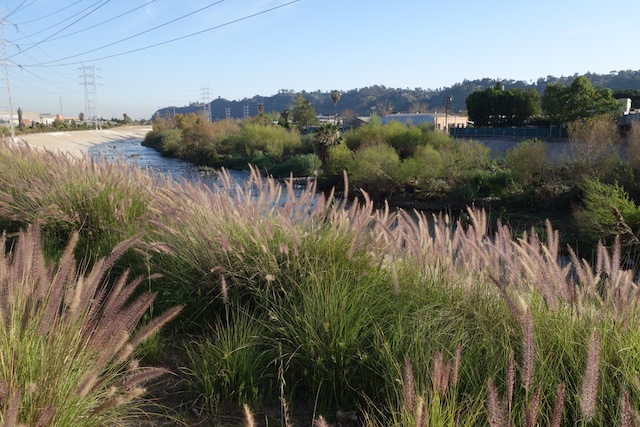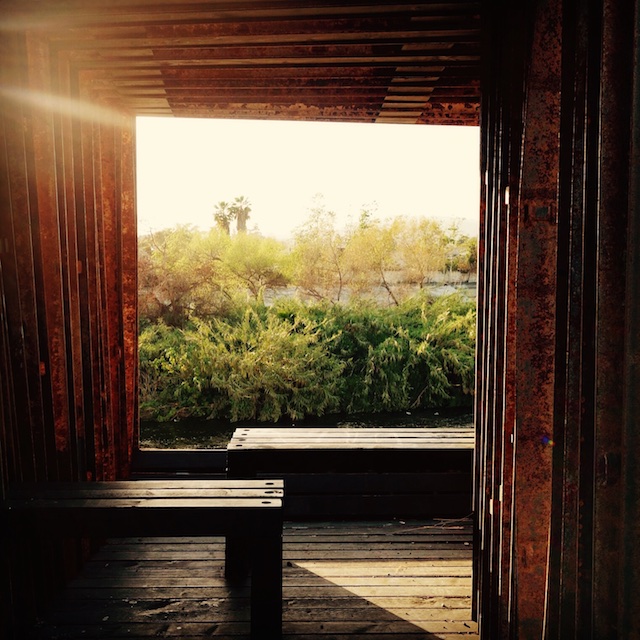It's our belief that in the next 20 years, the face of the LA River will be completely transformed, providing park and art spaces for the the public, and revitalizing the neighborhoods of an estimated one million residents that live along the banks. Cutting a wide swath through the metropolis, and bisecting dozens of congressional and community districts, the river revitalization has the potential to transform the city. But because it flows through so many political districts, this transformation will be complicated—the change will take years, but there are positive signs that it will happen.

Last June, The US Army Corps of Engineers threw their support behind a $1 Billion plan to restore an 11-mile stretch of the river from downtown to Elysian Park. That project is working its way through the funding process. Many different groups are working on individual projects on parcels of land along the 51 miles of waterfront that "flows" from Canoga Park to Long Beach. Whether public or private, these organizations are bringing funding, political power, and creative urban planning together to solve the riddle of the river, piece by piece.
Many visionaries are willing to spend their time and money to make these projects come to life. They believe that restoration of the river will provide much needed peaceful, recreational experiences for Angelenos. Just last week, Los Angeles Times Architecture critic Christopher Hawthorne articulated his vision for why the river is an important part of the "Third Los Angeles" during a tour the Bowtie Project (see below). He said that "No part of the natural or built environment is as emblematic of the third Los Angeles as the river." To understand what he means, read this excerpt from LA Observed's Jon Christensen:
The history of the "three Los Angeles," Hawthorne said, can be seen in the river. In the beginning, the river was "untamed." Then it was channelized, made predictable, "a cousin of the freeway." Now, it is becoming something else, at the center of a "complicated relationship between nature and culture." And neighborhoods along the river, once largely forgotten, are the center of attention as the third Los Angeles doubles back and turns in on itself, instead of expanding ever outward. No neighborhoods have "more potential for reinvention" to "reanimate and repair the public realm"—"the chief challenge central to the third LA," Hawthorne said — than those along the river.
Clockshop LA and The Bowtie Project
We got a glimpse of the future when we toured The Bowtie Project ourselves, and sat in this artist -installed window frame on the river, which offers a bucolic glimpse of the river's magic by evoking both a simpler past and a more verdant future with this simple vista. Along this bowtie-shaped parcel of CA Parkland that borders the river in Elysian Park, several art projects have taken their places in the reclaimed industrial space. We had a tour of them and got a sense of how magical the river could be – it really was peaceful, there was rushing water, lush green embankment, and families picnicking along the edge of the concrete.
We got to visit The Bowtie by attending an event at Clockshop LA a multifaceted, nonprofit arts organization that works at the intersection of politics, urban space, and cultural production to explore the forces that shape our lived environment. The Bowtie has been owned by CA State parks since 2003 and closed to the public for over a decade, but now Clockshop has been invited to bring a broad and experimental blend of artists’ projects and collaborations to this overlooked piece of land.
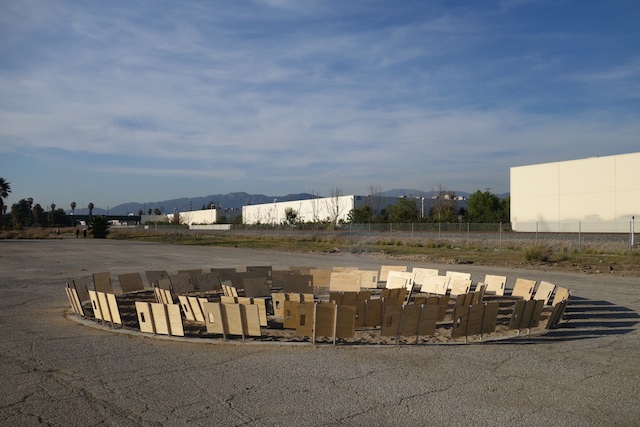 Both the window and seated campfire areas depicted above were made by groups of students from Woodbury University’s Architecture and Civic Engagement Program. See here and here for more information.
Both the window and seated campfire areas depicted above were made by groups of students from Woodbury University’s Architecture and Civic Engagement Program. See here and here for more information.
Here is link to The Bowtie's many art installations and activities. Sign up to keep up with their many events and celebrations. They have parties, sleep-overs, and lectures on a regular basis and the river is really quite beautiful at this spot with lush vegetation and flowing water.
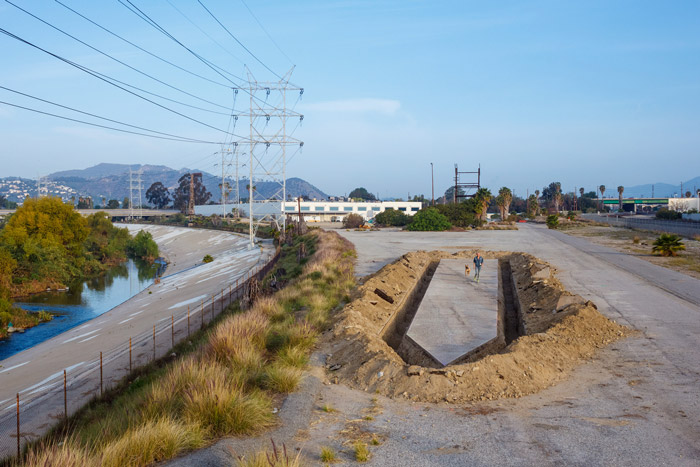 The Unfinished is an obelisk-shaped excavation located along the banks of the channelized LA River by Michael Parker.
The Unfinished is an obelisk-shaped excavation located along the banks of the channelized LA River by Michael Parker.
Other Resources for Learning about the River
KCET does a great job tracking this project, so read more of their coverage here.
Los Angeles River Corp is a non profit venture charged with catalyzing responsible real estate and related economic development along the LA River. LARC's mission is to transform the LA River to improve people’s lives by carrying out sustainable land use projects, advocacy for river friendly policy, and programs for community benefit.
Kayak on the River with LA River Safari, opening for the season in May 2015.
Here is a link to the LA River Recreation Zone that describes where citizens can utilize the assets of the river, for kayaking and walking and fishing. These activities are seasonal, however.
Completed Projects
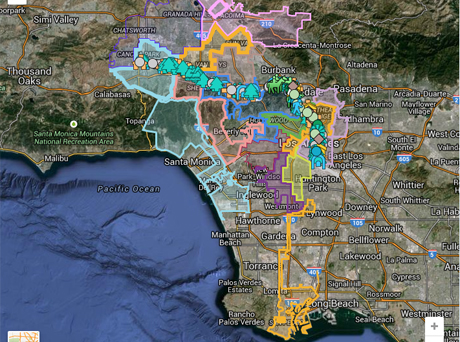
The City of LA has a Master Plan for the River's revitalization (click to find it here). According to Christine Wartman of LA's Department of Public Works Watershed Management Division, it's a tricky process because "depending on the area, different players are involved with each project, and have to coordinate with each other." They also need to intersect with the US Army Corps of Engineers and the LA County Flood Control offices.
Here is an article about The Dominguez Gap Wetlands in North Long Beach that has a man made wetlands that both recharges ground water and provides park space for recreation. It's "the poster child" for what can happen when all parties work together.
The Los Angeles River Headwaters Project revitalized approximately 1.25 miles of previously restricted Los Angeles County Flood Control District (District) right-of-way along the Los Angeles River. This project allowed for the construction of recreational trails along both banks of the Los Angeles River between Owensmouth Avenue and Mason Avenue. Enhancements to the site include improved fencing, native drought-tolerant landscaping, rest area amenities, educational and interpretive signage, pedestrian bridges over Browns Creek channel and De Soto Drain, and rain gardens. The project is consistent with the Los Angeles River Master Plan goals of developing a continuous greenway, enhancing water quality, providing recreation opportunities, and restoring the natural environment along the Los Angeles River. Construction of the project began in 2012 and was completed on July 12, 2014 with total project costs of approximately $11.4 million. The project was awarded $1.9 million through the Proposition 84 River Parkways Grant Program.

